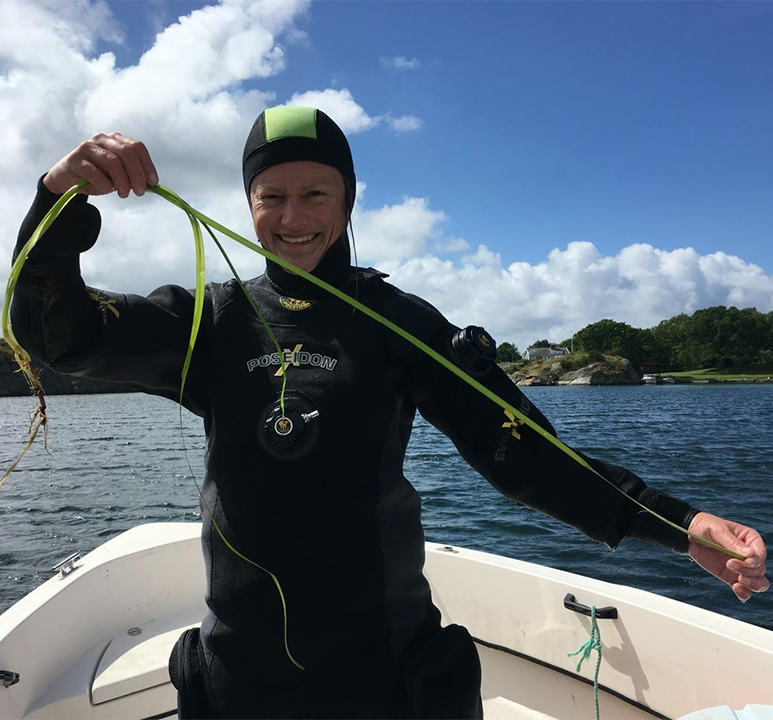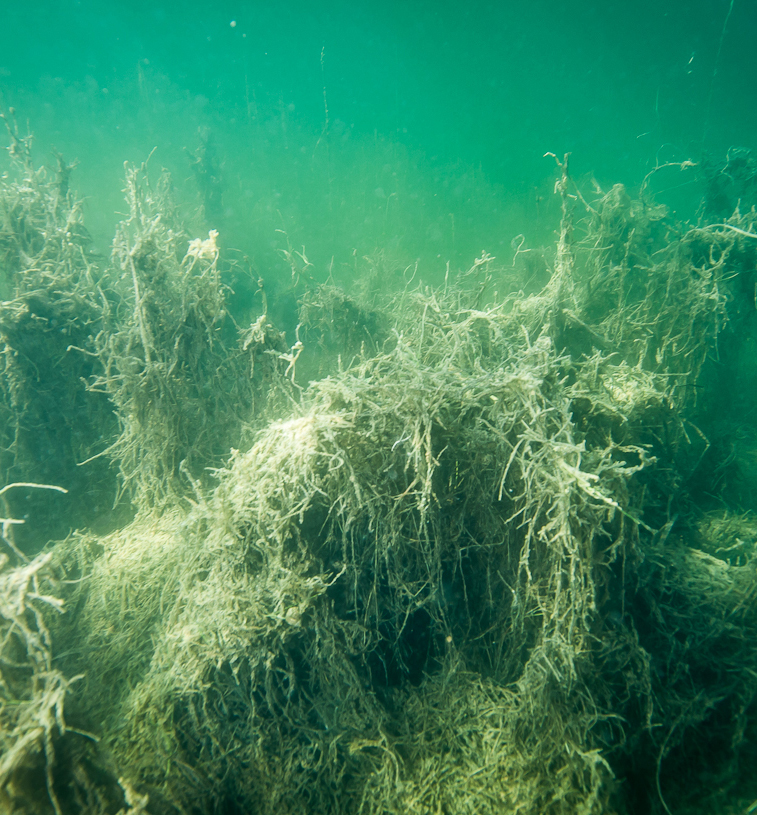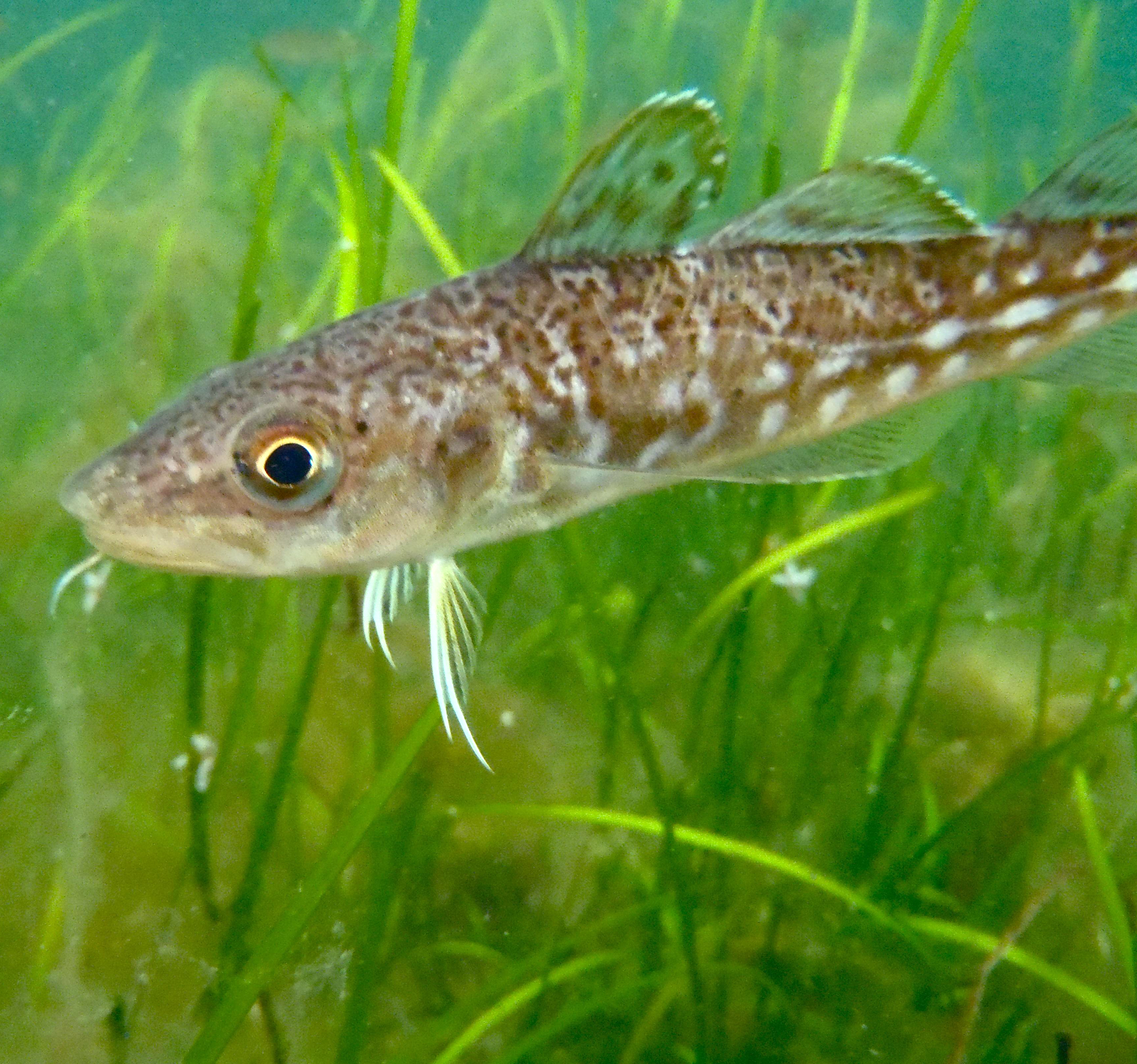Method developed to protect threatened eelgrass meadows
Researchers have used a new method to identify which eelgrass meadows on the Swedish coasts are particularly vulnerable or valuable and which meadows should be restored in the future.
Researchers have used a new method to identify which eelgrass meadows on the Swedish coasts are particularly vulnerable or valuable and which meadows should be restored in the future.

Eelgrass meadows i Gullmarsfjorden on the Swedish coast.
Researchers have used a new method to identify which eelgrass meadows on the Swedish coasts are particularly vulnerable or valuable and which meadows should be restored in the future.
Eelgrass (Zostera marina) is a marine flowering plant that provides a habitat for a wide range of marine plants and animals, including several commercial fish, such as cod.
Now an international research group led by researchers from the University of Gothenburg has developed a new method for evaluating which eelgrass meadows are the most sensitive and which meadows have the greatest importance for future survival.
Eelgrass grows on shallow soft bottoms in the northern parts of the Atlantic and Pacific Oceans.
It plays an important ecological role along the Swedish coasts in the North Sea and the Baltic Sea.
 “Eelgrass has a unique role. It stabilises the seabed, improves water quality and absorbs nutrients and carbon from the water, providing us with a number of important ecosystem services,” says Marlene Jahnke, lead author and a researcher at the Department of Marine Sciences.
“Eelgrass has a unique role. It stabilises the seabed, improves water quality and absorbs nutrients and carbon from the water, providing us with a number of important ecosystem services,” says Marlene Jahnke, lead author and a researcher at the Department of Marine Sciences.
According to the researchers, the new method, which takes into account dispersal and genetic diversity of eelgrass, can offer ways to improve management of threatened meadows.
Through this method, researchers have identified networks of eelgrass meadows that together provide high survival and maintain high genetic diversity. This increases the likelihood that eelgrass can tolerate future environmental change.
Eelgrass meadows, a highly threatened habitat, have dramatically declined in many places in the Kattegatt and the Skagerrak since the 1980s. The main causes are eutrophication in combination with overfishing and coastal development.
 “Protecting and preserving threatened meadows in our coastal areas requires quick actions and management initiatives based on effective scientific methods,” says Marlene Jahnke.
“Protecting and preserving threatened meadows in our coastal areas requires quick actions and management initiatives based on effective scientific methods,” says Marlene Jahnke.
Using genetic analyses, demographic modelling and oceanographic models, the research team has been able to develop the new method, which shows how seeds are disseminated among different eelgrass meadows.
The study has been conducted in the southern Bohuslän province in areas where over 90 per cent of the eelgrass has been lost since the 1980s.
Through the new method, healthy eelgrass beds have been identified. These important nodes in networks of eelgrass meadows should have the highest priority for protection.
 But researchers have also identified vulnerable eelgrass meadows, which today are isolated from other meadows, and lost meadows that have been important for the eelgrass networks.
But researchers have also identified vulnerable eelgrass meadows, which today are isolated from other meadows, and lost meadows that have been important for the eelgrass networks.
“A unique aspect of the work is our ability to use network models to identify historically significant areas that have lost their eelgrass meadows and that should be given priority for restoration through replanting,” says Marlene Jahnke.
The new method can provide guidance for management authorities in Sweden. According to the researchers, it can also be used as a blueprint for conservation actions in other countries and for other threatened habitats, such as forests and coral reefs.
The article, titled Integrating genetics, biophysical, and demographic insights identify critical sites for seagrass conservation, appears in the scientific journal Ecological Applications.
Here you can read the article in the journal Ecological Applications
Contact:
Marlene Jahnke researcher at the Department of Marine Sciences, University of Gothenburg, marlene.jahnke@gu.se, +46 (0)31-786 18 95
Alternate contact:
Per Moksnes, a researcher at the Department of Marine Sciences, University of Gothenburg, per.moksnes@marine.gu.se, +46 (0)31-786 27 10, +46 (0)732-57 62 24.
Photo GU
Read more about the Zorro research team’s work on eelgrass: www.gu.se/zorro